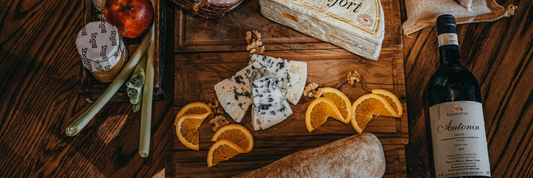Choosing the right beer can size not only affects production costs, but also impacts consumer experience and marketing strategy. This article will help you understand the common beer can sizes and how to choose the right one for your product.
The Importance of Choosing Beer Can Sizes
Beer can sizes directly affect:
- Consumer experience: Can capacity determines the amount of beer in each serving, affecting customer satisfaction.
- Marketing and distribution strategy: Different can sizes are suitable for different distribution channels and customer segments.
- Production and shipping costs: Larger cans can increase production and shipping costs, but can also bring higher profits if priced appropriately.
Standard Beer Can Sizes ML & Oz
8 oz (237ml) Can - "Stubby" or "Pony"
- Features: Small can, often used for high alcohol content or experimental beers.
- Advantages: Helps consumers enjoy beer without worrying about consuming too much alcohol.

12 oz (355ml) Can
- Features: This is the most standard and popular size for canned beer, suitable for many different types of beer.
- Advantages: Easy to transport, suitable for the consumption habits of most customers.
Slim Can Guide: Sizes, Uses & Best Beverage Options
Tall Can Beer 16 oz (473ml) - "Tallboy" or "Pounder"
- Features: Taller can, often used for craft beers.
- Advantages: Creates a high-end feel, suitable for those who want to enjoy more beer at one time.
19.2 oz (568ml) Can – "Stovepipe"
- Features: Large cans, suitable for single beer products, often found in convenience stores.
- Pros: Attracts customers' attention, provides more beer for those who want to enjoy it longer.
24 oz (710ml) Can – "Silo" or "Tallerboy"
- Features: Large cans, often used for cheap beers or other alcoholic beverages such as hard seltzer.
- Pros: Reasonable price, suitable for those who want to buy beer in large quantities.

32 oz (946ml) Can – "Crowler"
- Features: Large cans, often used in craft beer bars for customers to take home.
- Pros: Keeps beer fresh, convenient for take-out.

Factors to Consider When Choosing Beer Can Size
Beer Type and Alcohol Content
- Light Beer: Suitable for 12 oz or 16 oz cans.
- High Alcohol Content Beer: Recommended for 8 oz cans to control alcohol consumption.
Target Audience
- General Consumers: Suitable for 12 oz or 16 oz cans.
- Craft Beer Lovers: May prefer 16 oz or 19.2 oz cans.
Market Trends and Business Strategy
- Consumer Trends: If the market favors large cans, you may consider 16 oz or 19.2 oz cans.
- Pricing Strategy: Larger cans may be priced higher, but production and shipping costs need to be considered.
Packaging and Manufacturing Capabilities
- Production Line: Make sure your infrastructure can handle the can size you choose.
- Cost: Consider the cost of raw materials, printing, and shipping for each can size.
Comparing Aluminum Cans to Other Packaging Types
Aluminum Cans vs. Glass Bottles Beer
- Durability: Aluminum cans are lighter and less likely to break than glass bottles.
- Recyclability: Aluminum cans have a higher recycling rate, about 68% compared to 3% for plastic bottles in the US.
- Flavor Impact: Glass bottles have less of an impact on the flavor of beer than aluminum cans or plastic bottles.
Aluminum Cans vs. Plastic Bottles Beer
- Preservation Ability: Plastic bottles can cause beer to lose carbonation more quickly due to the porous nature of plastic.
- Environmental Impact: Aluminum cans are more efficient at recycling, reducing environmental pollution.
Conclusion
Choosing the right beer can size requires careful consideration of the type of beer, target audience, market trends, and production capacity. Understanding these factors will help you make optimal decisions, meet customer needs, and improve business efficiency.




